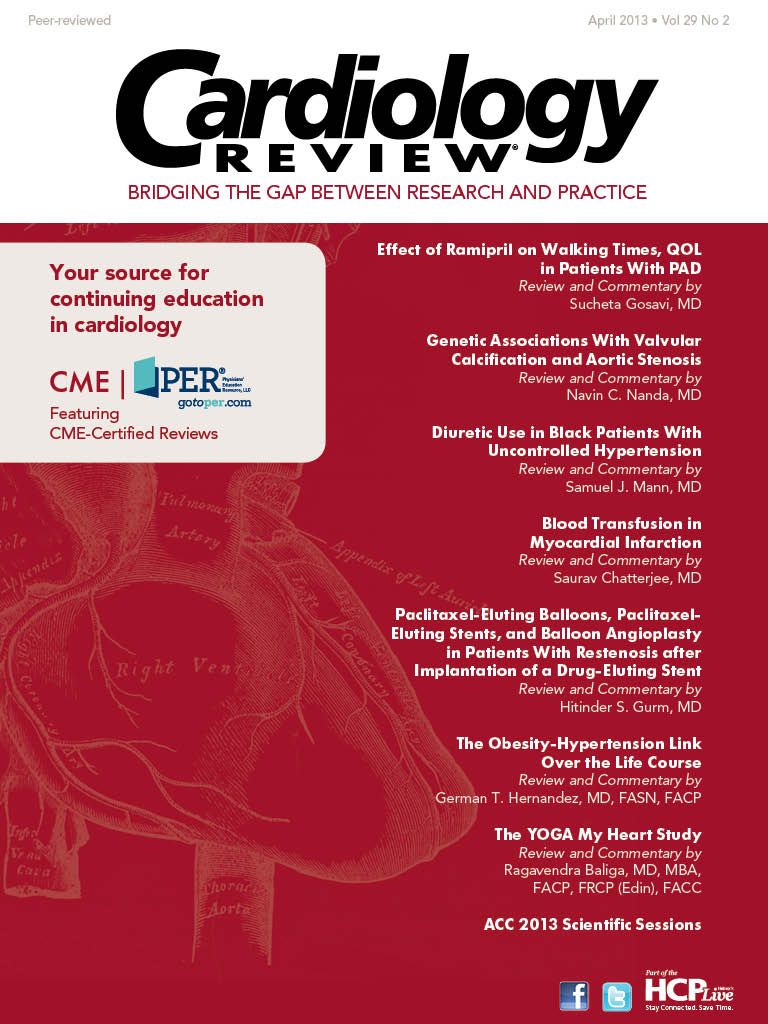Spring Is In the Air
Debabrata Mukherjee, MD, MS, FACC
Editor-in-Chief
After a long winter, particularly for those on the East Coast, spring is finally in the air. I hope everyone had a nice spring break with their family and is eager to do some insightful cardiology reading.
We touch on several clinical conundrums in this issue that I am sure our readers will find illuminating. Dr Navin Nanda discusses genetic characteristics and their associations with aortic valve calcification evaluated by standard CT scans. He reports that a specific SNP, rs10455872, has been identified that is associated with aortic valve calcification and aortic valve stenosis; research also implicates elevated plasma Lp(a) levels in the development of aortic valve disease.
Dr. German Hernandez delves into the association between obesity’s links to hypertension and suggests that that higher weight in young adulthood and weight gain through middle age both increase the risk of subsequently developing hypertension. He goes on to say that this knowledge provides an important contribution to the impact of body weight gain on the risk of developing hypertension throughout the life course.
Dr. Saurav Chatterjee discusses blood transfusion in myocardial infarction and informs us that a liberal blood transfusion strategy compared with no blood transfusion or a restricted blood transfusion strategy appears to be associated with higher all-cause mortality, as well myocardial infarction rates in patients with myocardial infarction. One should use caution and careful risk-benefit analysis prior to transfusing these patients.
Dr. Sucheta Gosavi talks about the effect of ramipril on walking times and quality of life in patients with peripheral arterial disease, and reports that there was some improvement in the median physical component summary score with ramipril.
She suggests that with few FDA-approved drugs available for alleviation of PAD symptoms, the addition of ramipril therapy would be highly desirable. Dr Samuel Mann dissects diuretic use in black patients with uncontrolled hypertension and asserts that although many drug classes provide very reasonable and metabolically neutral alternatives to diuretics as first-step drugs, and although a diuretic is not the right drug for everyone, the low rate of diuretic usage in a black population with uncontrolled hypertension is simply wrong, and hard to explain.
Dr. Hitinder Gurm looks at paclitaxel-eluting balloons, paclitaxel- eluting stents, and balloon angioplasty in patients with restenosis after implantation of a drug-eluting stent, and thinks that paclitaxel-eluting balloons have demonstrated remarkable efficacy and are a welcome addition to the catheterization laboratory armamentarium. Once clinically available, it will likely emerge as the preferred device for both DES and BMS restenosis.
Dr. Ragavendra Baliga assesses whether yoga has a beneficial effect on the burden of atrial fibrillation and patients’ quality of life, depression, and anxiety, and reports that although the study cohort was small, the findings suggest that yoga may be a useful adjunct, if not primary treatment, to reduce the burden of atrial fibrillation. He further states that the mind is able to perform inexplicable events that modern medical science is unable to explain, and we must not be quick to discount these effects merely because we do not comprehend them.
Ms. Jackie Syrop (our tireless and astute managing editor) has put together a succinct summary of several key late-breaking clinical trials presented at the recent American College of Cardiology meeting, which I am sure you will find useful reading. In our diabetes column, Dr Aparna Bhagavat provides an excellent review of ß-cell dedifferentiation and type 2 diabetes.
I hope that you will find these commentaries to be valuable and enjoyable. I encourage you to share your insights, thoughts, and personal experiences on the myriad topics touched upon in this issue. On a broader level, I would love to hear feedback on how we can make this journal the best cardiology journal that reviews contemporary literature. My goal continues to be to make you look forward to every issue of Cardiology Review.
Debabrata Mukherjee
Editor-in-Chief
